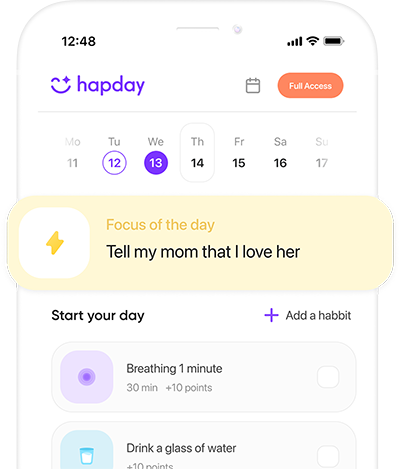Table of Contents
- ADHD Burnout: When the Brain Says “Enough!”
- Riding the AI Wave: Hope or Hype?
- Peeking Behind the Curtain of AI’s Magic
- Navigating the Bumps and Blahs of AI
- Bringing It Home with Real-Life Testimonies
- Glancing at the Horizon of AI-ADHD Synergy
- Endnote on AI Juggling ADHD Challenges
So, here’s the thing—Attention Deficit Hyperactivity Disorder (ADHD) isn’t just some niche issue. Nope, it affects a staggering number of people all over the globe. Crazy, right? According to the CDC, about 9.4% of kids and 4.4% of adults in the U.S. alone have been diagnosed with ADHD. It’s an obnoxious cocktail of inattention, impulsivity, and nonstop hyperactivity. We’re talking serious hurdles in just getting through the day, especially when stress piles on, making burnout almost inevitable. And burnout? It’s not just that feeling of being fried up mentally. Nah—it’s this overwhelming crash that hits you emotionally, physically, and cognitively, shaking up your whole world.
With tech evolving at a breathless pace, it’s given us these shiny new tools to help folks with ADHD cope better. Ever heard of AI being a lifeline for ADHD burnout? I mean, we’re in this wild era where Artificial Intelligence can churn through buckets of data like a wizard, learning on the fly and delivering hyper-personalized support. It’s a trip, really. So, let’s dive into how AI’s being deployed to tackle ADHD burnout and what the future might hold for this burgeoning alliance.
ADHD Burnout: When the Brain Says “Enough!”
ADHD burnout — it’s this vicious loop of overdoing it under stress. People with ADHD often push themselves way too hard just to keep up. Hyper-focus on work tasks, neglecting breaks? Yup, that can lead to exhaustion big time. Think of all that tussling with time management and staying (well, trying to stay) organized—it’s like a treadmill that never stops.
Ever wonder what ADHD burnout looks like? Here’s a sampler platter:
- Always feeling like you’re dragging yourself through a fog
- Never getting as much done as you planned (oops)
- A mood that’s about as steady as a rollercoaster ride
- Zeroing in on anything is Mission Impossible
- That heavy blanket of hopelessness? Yeah, it’s there
Does it mess up just work? Nope, burnout spills into your mental well-being, screws with relationships, and tanks your work life. I once knew someone who described it as trying to run a marathon with a pebble in his shoe and the world on his shoulders. Tired just thinking about it.
Riding the AI Wave: Hope or Hype?
AI is kinda like that enthusiastic friend who’s suddenly got a fix for everything. It can be a game-changer for ADHD—no kidding. Here’s how:
- Tailored Time Management Buddies: AI thrives on patterns—it’s practically what it lives for. Hit up apps like Todoist or Trello, and they can suggest schedules, how to dodge productivity pits, and even nudge you to take that much-needed coffee break. (We all need one, sometimes multiple, let’s be real.)
- Emotional Regulation Sidekicks: The emotional juggle is real for ADHD folks. AI-powered coaches? They dole out tactics for handling feelings on the spot. There’s Woebot, offering CBT tricks to keep emotional snapbacks at bay.
- Brain Bootcamp with AI: Cognitive training with AI? Tailored to your pace, baby. Platforms like CogniFit build on your quirks to level up attention and memory. It’s a bit like having a personal trainer, for your noggin.
- Med Management Made Easier: AI does wonders analyzing health data—to refine med dosages and keep side effects in check. Bye-bye, guesswork; hello, precision.
- Pep-Talk Chatbots: AI chatbots encourage you to be kinder to yourself. Seriously. Positive affirmations, mindfulness jam sessions—they could be a balm for those harsh self-critics within.
Peeking Behind the Curtain of AI’s Magic
No need to just take my word for it—research paints quite a promising picture. A study back from 2020 (Journal of Medical Internet Research, if you’re curious) found that AI-enhanced digital tools for ADHD symptoms? Yeah, they’re effective. AI learns as it goes, growing smarter with each interaction. Add natural language processing, and before you know it, you’ve got chatbots dishing out more human-like bytes of wisdom.
Navigating the Bumps and Blahs of AI
AI isn’t all rainbows and unicorns, though. Security alarms about personal data buzz loudly. Ethical usage hangs in the balance, so do these concerns curb AI? Better safe than sorry.
Plus, leaning too heavily on tech might put a damper on face-to-face human convo—not ideal. Anyone who’s ever wondered, “Is this what’s replacing traditional therapy?” would find balance is the key. Humans and AI need to do the tango on this one.
Bringing It Home with Real-Life Testimonies
AI in the real world—there’s where things get interesting:
- Replika, the AI bot engaging minds in meaningful chatter, found its footing helping with emotional support, making users feel less isolated.
- Focus@Will? A sonic savior. It sifts through tunes to aid ADHD concentration. For those of us who need to drown out distractions, it’s music to the ears—literally.
- Thync messes with stress levels through smart stimulation. No crystal ball needed to see how reducing stress helps curb burnout.
Glancing at the Horizon of AI-ADHD Synergy
Where to next on this crazy ride? AI’s evolution marches on, with more sophisticated algorithms in the works. Predicting burnout before it hits? It’s on the radar. Virtual reality aspects might get their time to shine too, giving cognitive training new dimensions (literally).
Endnote on AI Juggling ADHD Challenges
AI stepping up to help ease ADHD burnout is one of those tech-forward leaps in mental health. With AI’s knack for time-sensitive, personalized backup, ADHD’s hurdles might look a bit less like mountains. Privacy, ethical use, yes, still a big old elephant in the room—but manageable, one would hope.
As technologies advance, as our digital bedfellows grow ever more capable, we might be on the cusp of something truly groundbreaking—a better, more supportive world for folks grappling with ADHD. Fingers crossed, it keeps getting brighter.


This article really opened my eyes to how AI can help with ADHD burnout! The tailored time management tools sound super useful. I’ve often struggled with organizing my day, and the idea of having an AI buddy to nudge me along is intriguing. Can’t wait to try out some of these suggestions!
I agree! It’s fascinating how technology is evolving. I wonder if using AI for emotional support could replace the need for therapy? It seems like a great supplement, but I hope it doesn’t take away from human connections.
While I’m excited about the potential of AI, I do have my reservations. Relying too much on tech for mental health can feel risky. What if people end up isolating themselves even more? Balance is key, right?
Totally! It’s a double-edged sword. We definitely need the human touch in therapy, but integrating AI could be beneficial too. Just hope it doesn’t lead to over-dependence on machines.
‘AI as a lifeline’—love that! The potential for personalized coping strategies is incredible. Imagine having a coach in your pocket that understands your unique challenges and helps you navigate them day-to-day!
‘Pep-talk chatbots’? That sounds comical but also amazing! Sometimes all we need is a little encouragement to get through tough days. Who knew tech could turn into our cheerleader?
‘Cognitive training with AI’? Wow, that’s like having a personal trainer for your brain! I love the idea of making learning and focus fun and tailored to my pace—definitely worth looking into.
‘Navigating ethical concerns’—this part really got me thinking about privacy issues with these apps. How much data are we giving away? We have to be careful while embracing new technologies.
‘Focus@Will’ sounds like a dream come true for those of us who struggle with distractions! Music that helps concentration? Yes, please! Need to check that out ASAP.
The stats on ADHD are shocking! It’s mind-blowing how many people are affected by it globally; makes you realize just how important discussions around solutions like this are!
The emotional regulation sidekicks sound promising too; being able to handle feelings better would be such a relief for many dealing with ADHD burnout!
So interesting to see AI making waves in mental health support; it’s refreshing to think there might be effective tools out there specifically designed for ADHD challenges!